For our first offshore leg from Friday Harbor to San Francisco we had set an ideal departure time of the 23rd to the 28th of August. As that timing neared, the weather was looking good for a possible departure around the 25th. By many measures this trip down the coast could be the most unfriendly passage; it’s known for confused seas, strong winds, and minimal safe harbors along the 800 nautical-mile stretch. So we were thrilled that our friend Cameron was game to join us for the leg, to help share the watch keeping load and lend an extra set of hands when the conditions piped up.
Cameron arrived Sunday evening on 24 September in typically fashionable style, on the Kenmore Air float plane that docked about 50 steps away from Flyer on the breakwater. A few last minute accoutrements were procured, we had a last meal at San Juan Brewing, and got to bed early.
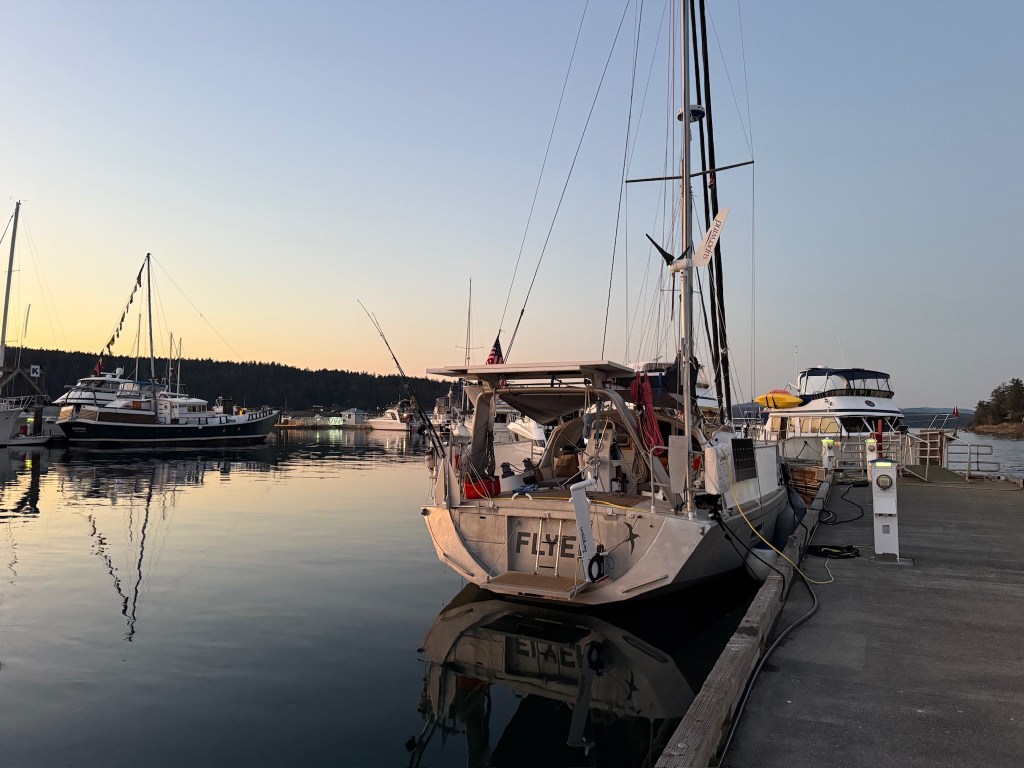
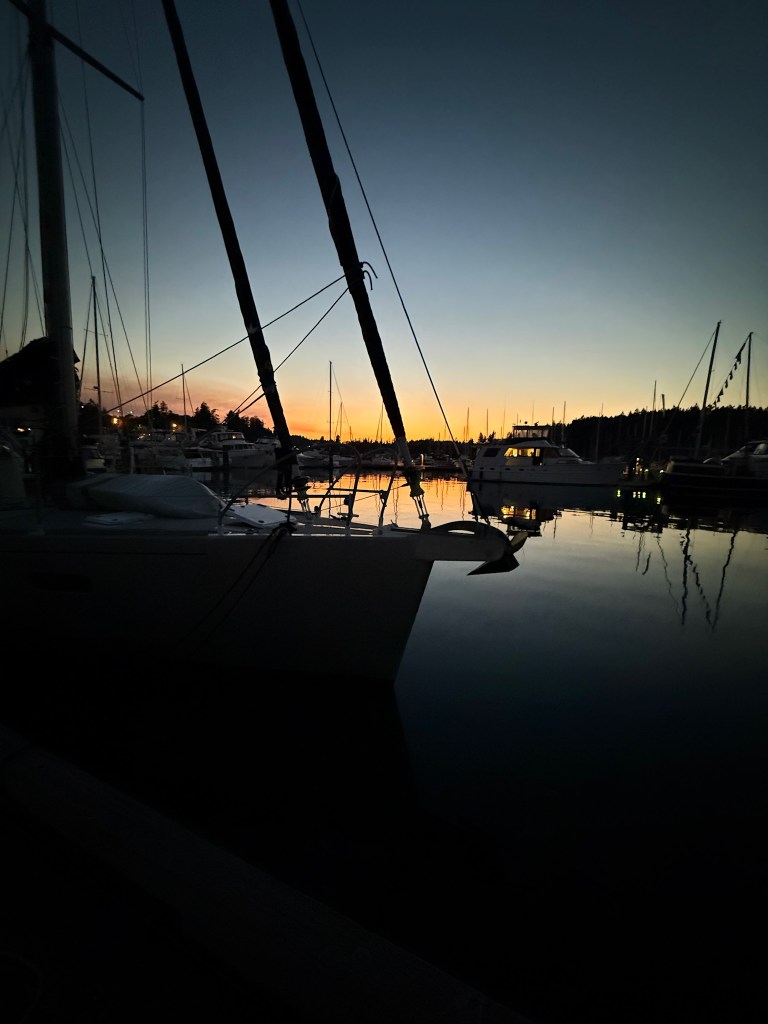
We had a perfectly still dawn exit out of San Juan Channel with the glow of the rising sun over Lopez Island on the morning of August 25th. The clear and calm conditions persisted until about 20nm before we reached Cape Flattery where it seemed everyone wanted to be that afternoon… seals, whales, porpoises, and the wind, all decided to hang out to the north of Neah Bay. At one point, the local breeze hitting the water just north of Waddaya Island hit 30 knots out of the WSW… almost on our nose. Then it was suddenly into the fog… which lasted for the next 10 hours or so.
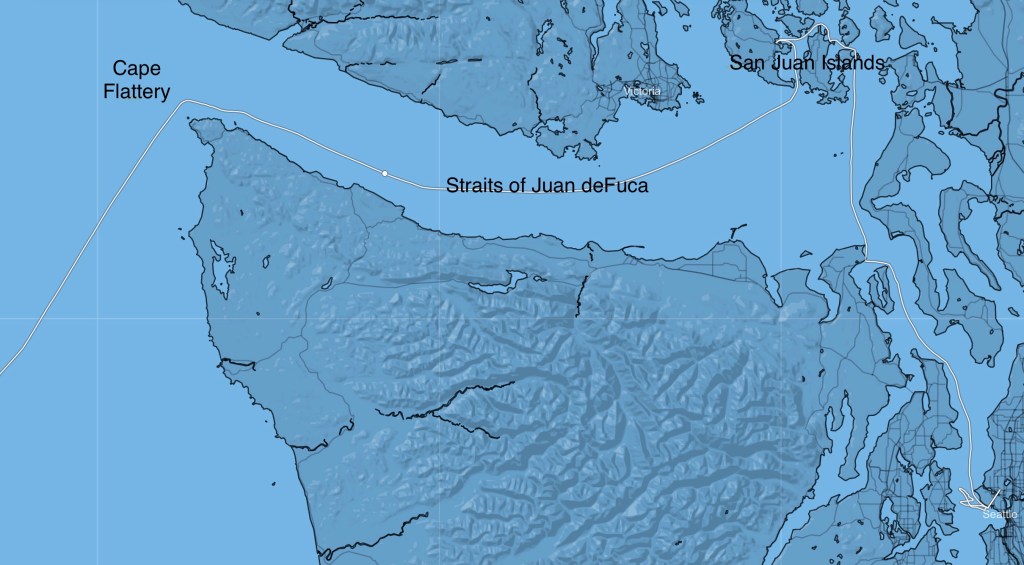
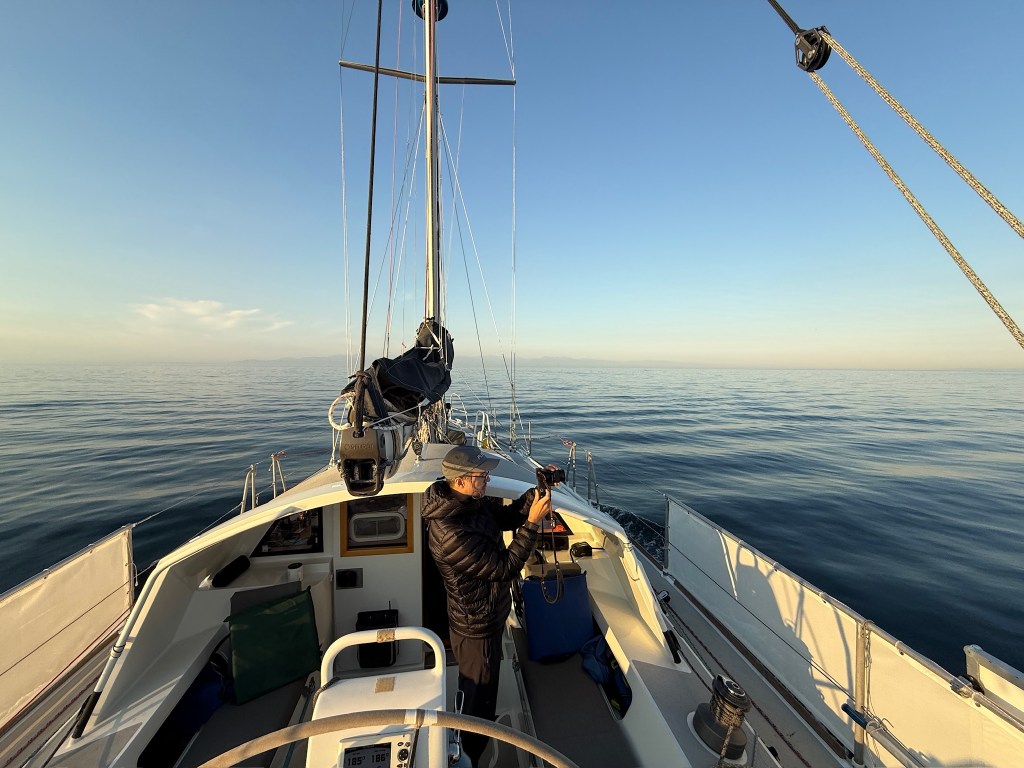
Our first night was quiet, foggy and really damp. We motor sailed in a building NW’ly breeze with an ugly, sloppy leftover confused swell that made us all extra sleepy. As dawn broke the fog lifted to show more low level clouds. Over the next 24 hours the breeze built and the seas regulated a bit. We shut down the engine around 0800 and sailed all day through clearing skies.
Around noon, Paul deployed our first fishing lure off of the big rod and within a couple of minutes we had a strike! The fish put up a solid fight – it required Cameron and me to take turns to fight it while Flyer was rolling along at 8 knots, not to be stopped. But when the fish was within half a boat length it let go! This same event then repeated itself about 4 times again until we decided to give the fish(ing) a break and lick our wounds.
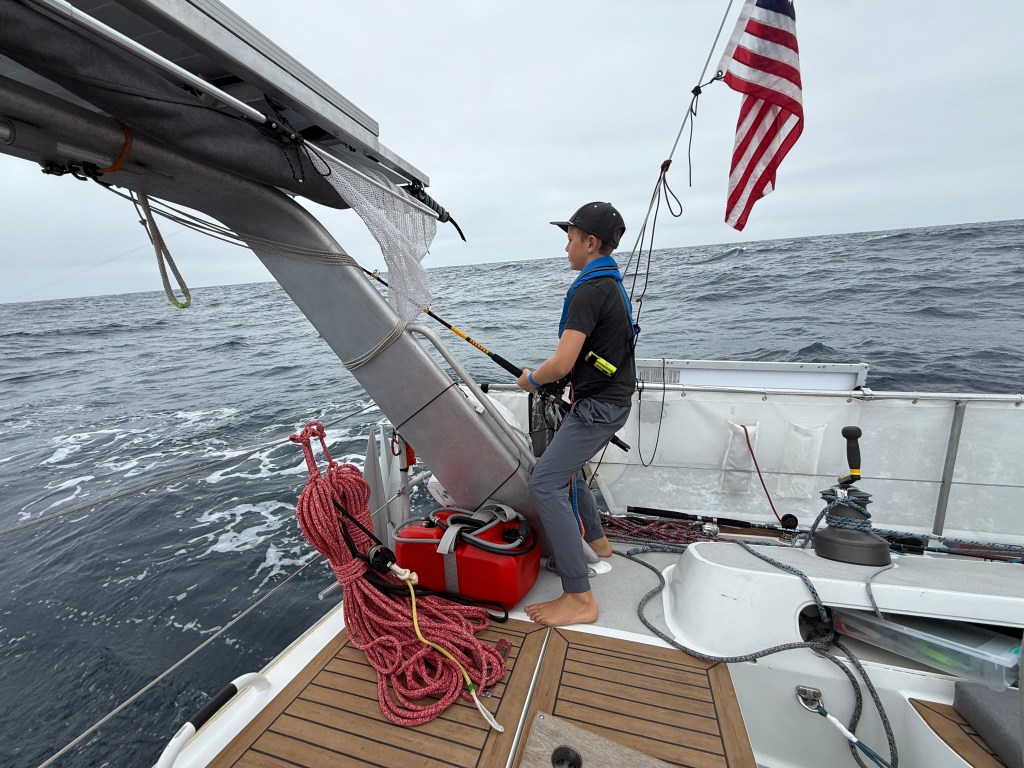

That day grew into a great day of sailing; partly sunny skies, a solid 25 knots from the north west, and gentle following seas. Flyer really hits her stride when the breeze is over 20 and aft of the beam. Just over 24 hours in and it felt like we had already seen quite the variety of conditions.
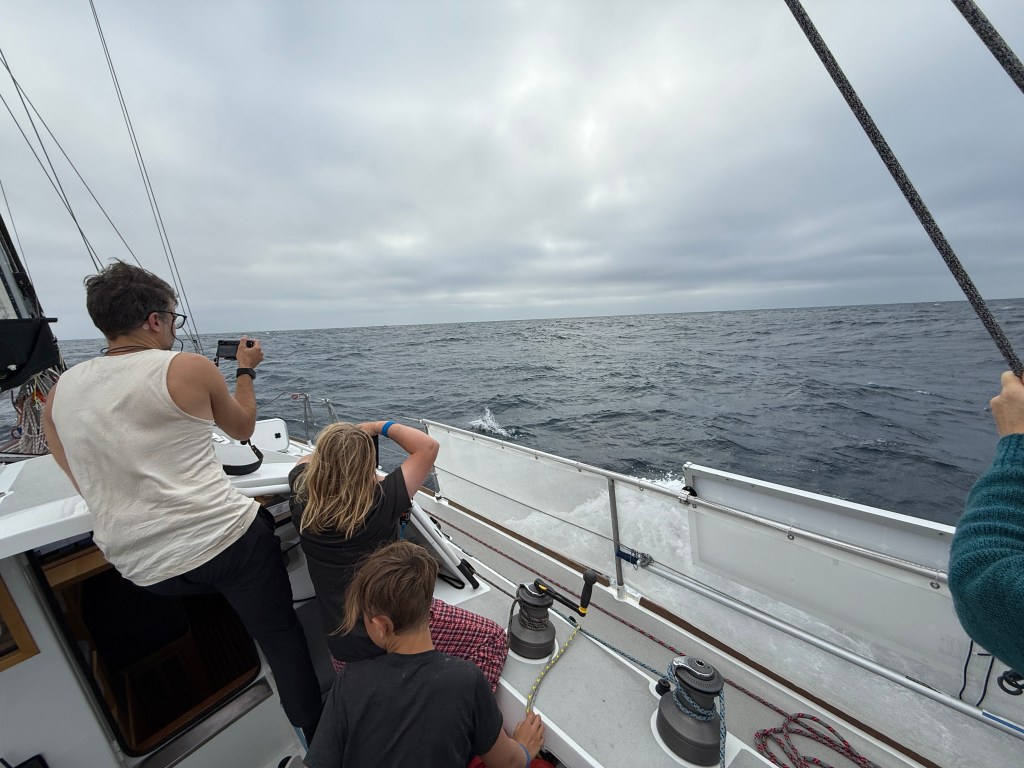
By 1900 local time we were about 80nm offshore, and due west of Manzanita, OR. I decided I’d do my daily checks around the boat, and checked in on the engine. I pulled the dip stick to check the oil level and discovered the oil to be over 150% of its maximum level! The oil looked normal in quality but obviously way above the required amount. It was last seen at about 90% just a day and a half earlier…
I extracted a small sample of engine oil and found seawater in it. Major bummer. But it was a good thing I didn’t try to start the engine prior to checking the oil level! With water in the cylinders, it’s highly possible that one can break critical components of the engine just trying to get it started, since water won’t compress nearly as easy as aspirated diesel will.
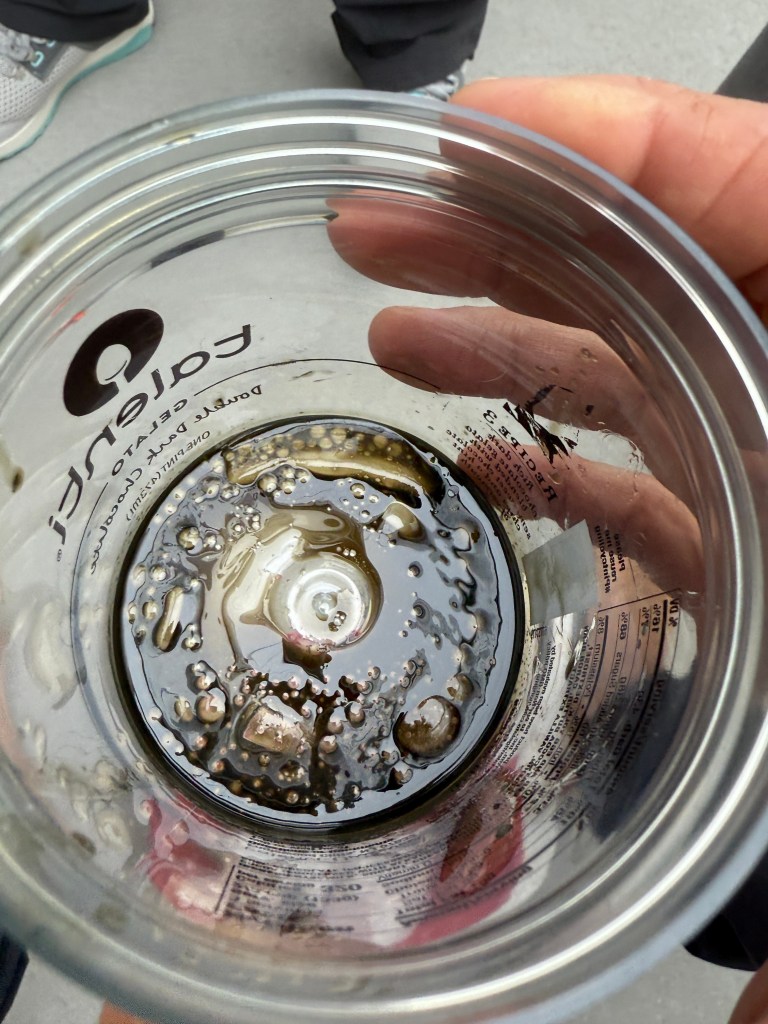
I promptly got on the phone to a few trusted advisors (thank you Jeremiah and Dad!) and did an oil change while underway to try to begin evacuating the seawater and replacing it with good oil. After that oil change I was able to turn over the crank shaft with a wrench, so we deduced there likely wasn’t much seawater (if any) left in the cylinders, and we felt good enough to give the engine a try at starting. (Normally one would pull the injectors at this point also to evacuate any water from the cylinders, but when able to hand crank the engine the amount of force required to turn it over will likely mean that using the starter won’t be a destructive act). We got the engine going after a couple of brief tries, and quickly shut it back down.
Another oil sample a few minutes later showed milky looking oil (a sure sign of water ingress) and, confusingly, a higher level than I had filled it to. Given the possibility of a crack in the components, we decided to sail direct for Newport OR.
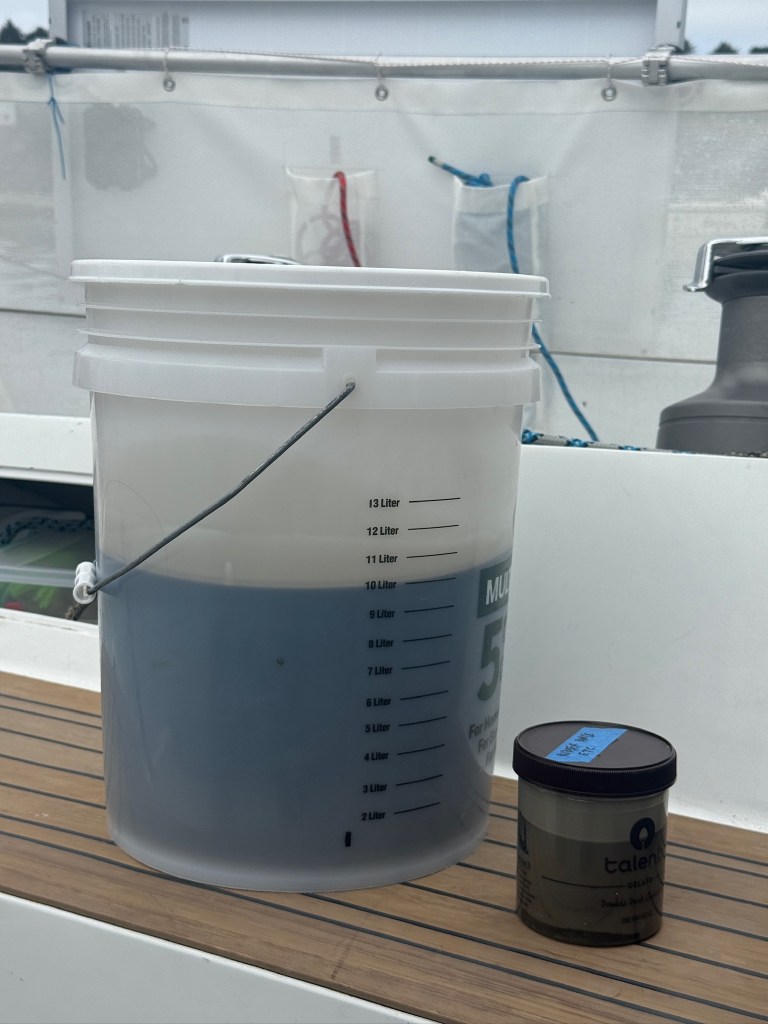

The other good news at this point was that there was still breeze. Before the sun set, we gybed to port and made our way at 8 knots towards Newport, about 100nm to our south east. We kept blasting along that evening but slowly, as forecast, the breeze started to die.
We felt a bit like the crew of Apollo 13, except instead of being stuck inside a tin can with the almost certain end of death awaiting us, we were stuck on a bobbing tin can with warm food aboard and many cold beers awaiting us.
We spent the next 36 hours sailing our butts off as the breeze continued to die and the visibility went to almost nothing. After staying up most of the night and well into the AM on Sept 27 trying to diagnose our engine issue and make a plan, I was getting tired. Kristen and Cameron were covering for me on deck all the while, which was an extra burden, since we decided to save the boat’s house battery power by shutting down all unnecessary electronics (including our auto-pilot, chartplotter, and sailing instruments… everything, it turns out, other than our AIS and our refrigerator!).
We’ve spent the last two years getting Flyer a full suite of renewable energy sources to power her batteries. She’s got 630w of permanently mounted solar panels, a SuperWind generator, and a Watt&Sea hydro generator. It’s a dream to have such options and flexibility, but, the one scenario this setup does not cover is thick fog, no wind, no engine, and no boat speed!
At 80 nautical miles out, we were hand steering the rest of the way, trying our hardest to get Flyer to move on course in the fickle conditions. As our speeds varied from 3 to 0 knots, the low-pitched moaning of our Watt&Sea hydro generator -induced when the boat reached break-neck speeds of 2.5 knots- captured the mood on board.
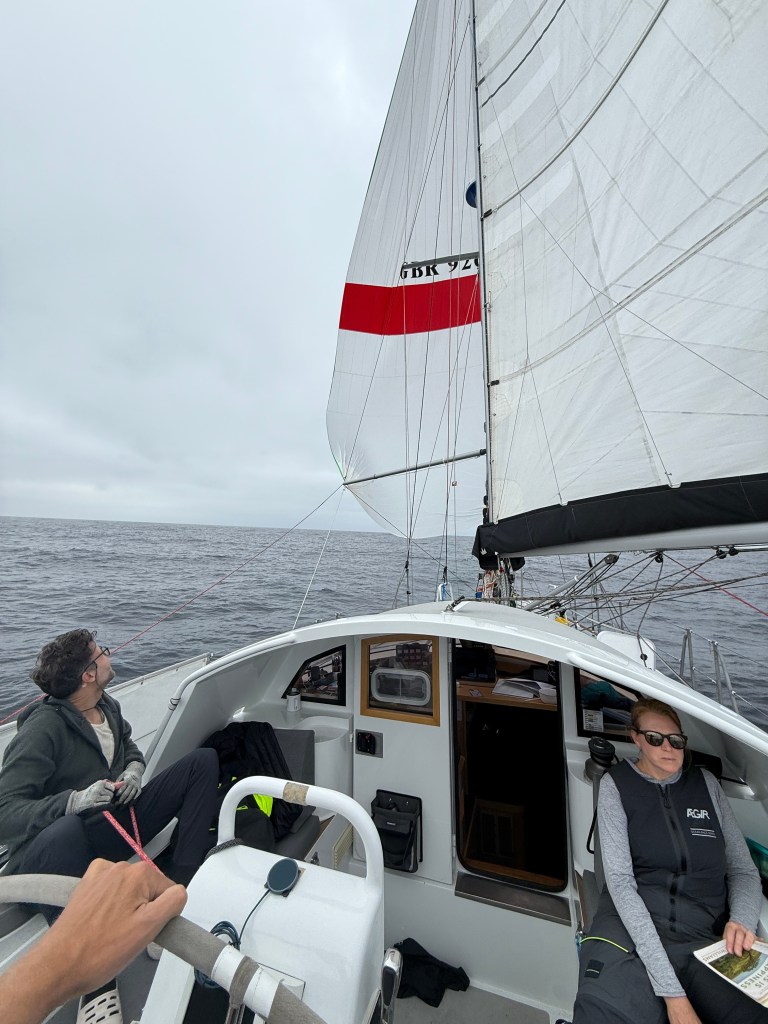
All this time we’d been in contact with the Coast Guard, notifying them of our lack of an auxiliary engine and our need for assistance to get into harbor once we were near Newport. (Newport has a tricky long, narrow channel and bar entry, which would make sailing in very challenging.) They initially were very insistent on checking in with us every hour, but we quickly adjusted that schedule as they learned that a.) we had wind and were able to sail towards Newport and b.) we had copious amounts of water and food aboard. Only did we learn later that it was because of an unknown c.)we had kids aboard that they took our case to the highest priority level.
Our check-ins with the Coast Guard were occurring on about a 6 hour cadence by the morning of September 28th. I had successfully told them every time “we’re all doing great, we have tons of food and water aboard, and we want to get ourselves as close to Newport own power so we can make a tow-in as easy as possible.” They were following us with our AIS transponder so they knew our exact location as we approached.
As a sailor I’ve been trained to be as self-reliant as possible, to never go out in conditions that look questionable, to be as prepared as humanly possible, and know how to get yourself out of trouble if it ever befalls you. This is the best part of sailing… that you can get yourself anywhere under your own power, without an engine (well, as long as you have canvas above your deck and water only on the outside of your hull). So we were doing everything we could to do this well, to retain battery power in case we needed to use our windlass, to keep sailing no matter what else happened.
The last forecast we had seen was showing a building southerly within a couple of days so we knew we wanted to get there soon. At around 0630 on the 28th of September I decided to take a nap, and was awoken about 20 minutes later by James telling me that “the Coast Guard is coming!” They had decided to ‘send assets’ at that point, and would be damned if we said otherwise. We were 11nm to the NW of Newport at this point, so they were about 30 minutes away. We quickly got the boat in ship shape, dropping the main and furled the genoa, and within a few minutes we saw the cutter arriving.
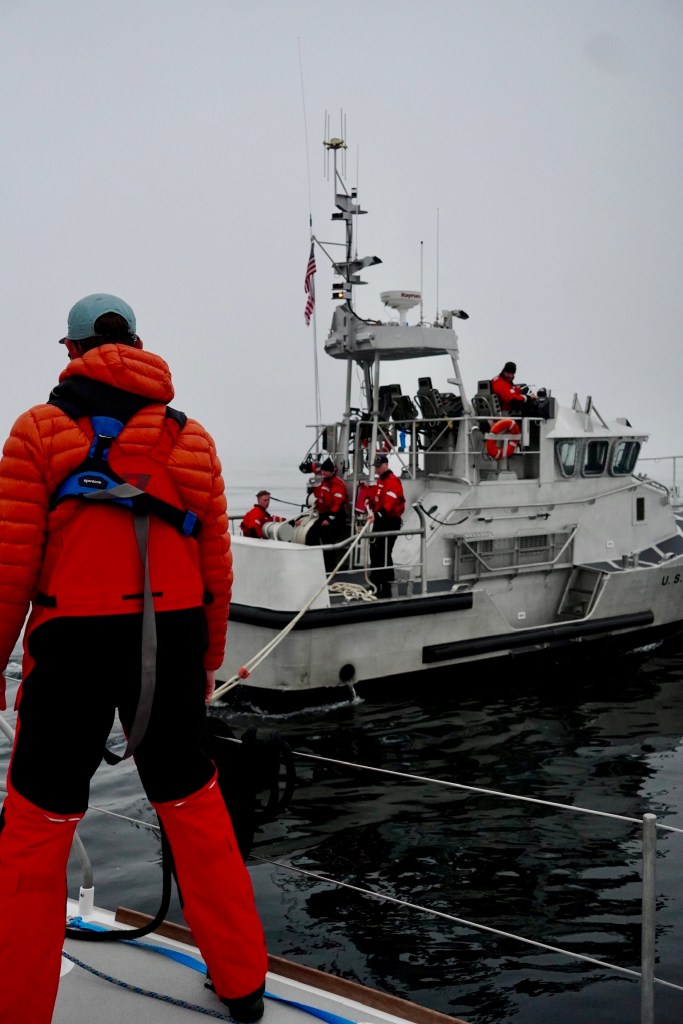
We arrived in Newport within an hour, dragging our Watt&Sea propeller the whole way and joyously generating 25 amps of juice at 12v, which was enough to turn our systems back on and reconnect with the world through our Starlink.
After passing beneath the Newport bridge, they brought their cutter alongside Flyer and we secured the boats together, side by side. They then proceeded to drive us with surprising precision into the Newport Marina.
I can’t quite describe what I felt at this time- it’s at once a sense of relief to get in safely to port after a major system failure like this, but also a sense of shame and disbelief that something like this could happen after all these years of preparation.
I’ve never been boarded before by the USCG, but given their role in this recovery they were required to board and inspect Flyer. We had readied our ships documents, collected our passports and ID’s, extracted our grab-bag from the liferaft compartment, and had the heads ready for inspection.
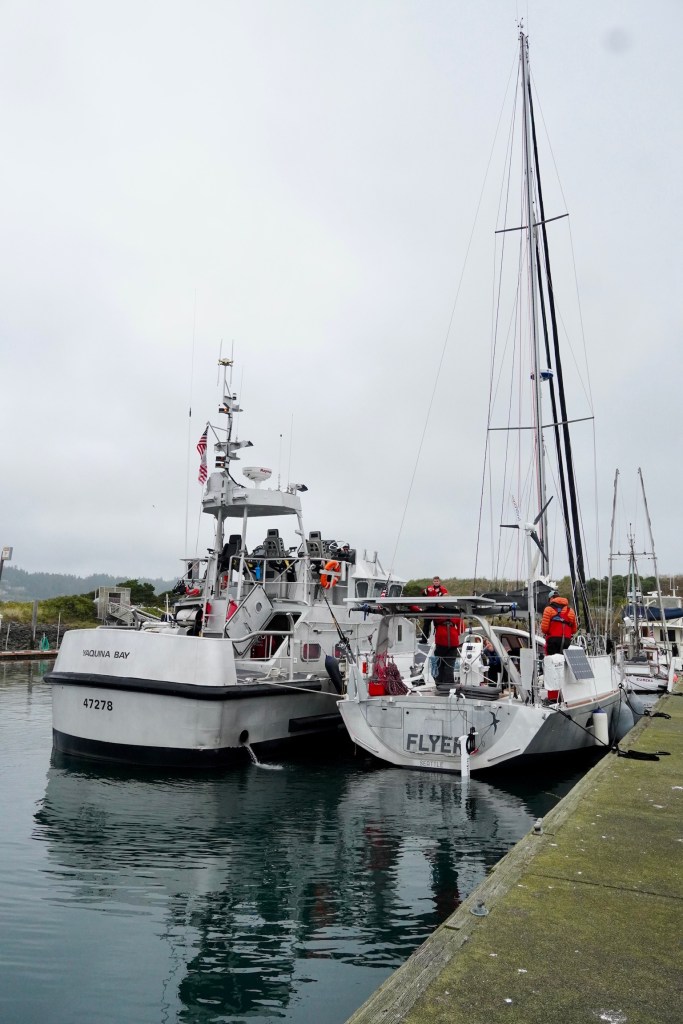
After we had tied Flyer up to the dock, the captain of the USCG cutter and his mate spent an awkward amount of time below inside their cutter readying themselves, and when they emerged from below they were fully armed and covered with bulletproof vests. They apologized profusely for their protocol and wardrobe; I gather we didn’t look like the sort of vessel that might require such fanfare.
We started the paperwork operation with them, sharing our flares (yes, still with valid dates), CO2 placards (right by the engine control panel in the companionway), USCG documentation (in our handy folder kept beneath the nav seat) and other requests at a decent clip. The captain continued to apologize as we checked every box along the way. They were incredibly professional, funny, and even curious about our boat and our plans. When they asked “do you have any firearms aboard,” we said “no but we’ve got a large machete!” Paul sprinted to his cabin to fetch it and show it to them.

When he concluded his inspection, the captain told me “you know, I’ve been doing this a long time, and I’ve never come across a sailboat and crew so well prepared.” It was an acceptable consolation for this unfortunate situation we’d found ourselves in.
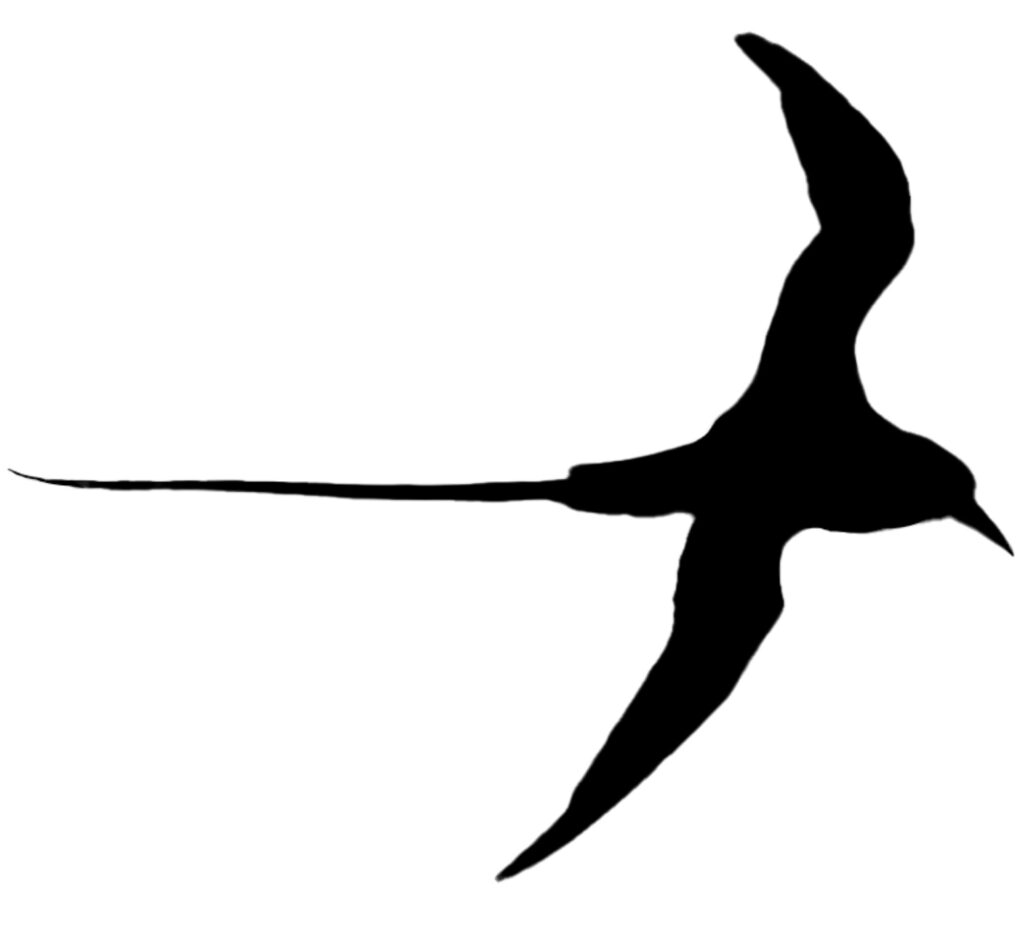
Leave a Reply to westcampCancel reply